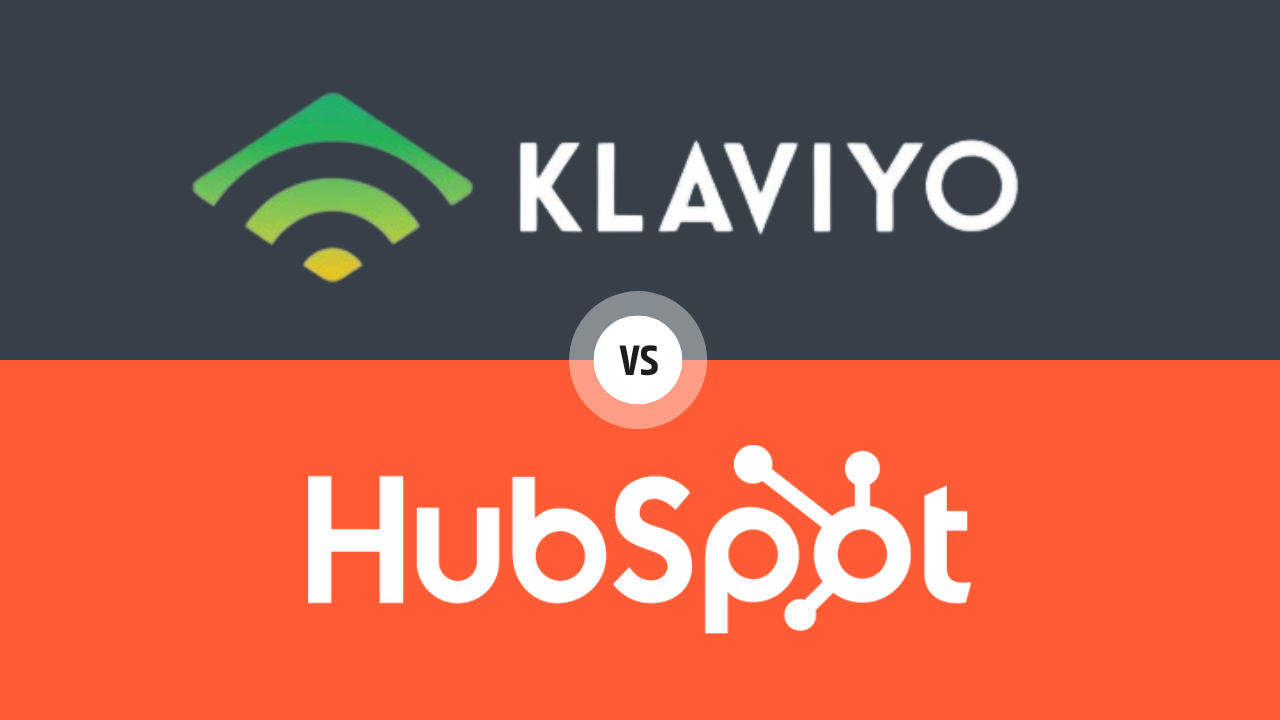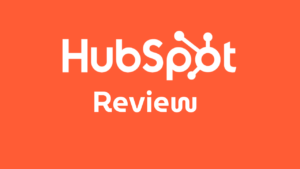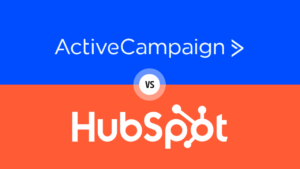Overview of Klaviyo vs HubSpot
Choosing the right marketing automation tool is essential to extending the reach of your audience. In this article, we will be about Klaviyo vs HubSpot. These platforms are two leaders in email marketing, each offering unique strengths customized to different business needs. This article goes in-depth into a comprehensive comparison of Klaviyo vs HubSpot through many categories, from the ease of user to Integration options to pricing and so on. Understanding the differences between Klaviyo and HubSpot will allow you to make an informed decision that fits your marketing goals and business objectives.
Table of Contents
1) Ease of Use and Interface
Klaviyo is specifically built for businesses operating an e-commerce business. It provides users with a user-friendly dashboard full of essential metrics and activities. This reduces the learning curve and helps beginners speed up the process of sending email campaigns while building out automation workflows through its drag-and-drop editor. Its user-friendly interface helps users set up and implement marketing campaigns more successfully.
HubSpot is simply the more complex one since it deals with all these functions with its broad CRM and inbound marketing capabilities. However, it has a systematic layout where users can easily navigate to functionalities. The HubSpot dashboard organizes all activities of marketing, sales, and services into one single place, which makes management of their pipeline and interaction from the single provided platform easy.


When we compare Klaviyo vs HubSpot in ease of use and their interfaces, both platforms offer user-friendly interfaces tailored to their target audiences. Klaviyo is best suited to e-commerce companies that require a basic and simple tool for email marketing and automation. HubSpot, on the other hand, is better for businesses looking to work with one solution since it has the most complete set of features.
2) Email Marketing Features
Klaviyo is a top player in e-commerce integration, much more known with platforms like Shopify and Magento. It has very advanced segmentation and personalization features that marketers use to segment their target customers based on behavior, purchase history, and interaction with previous emails. This level of detail means the emails are much more relevant and more likely to generate engagement and conversion.
HubSpot, on the other hand, stands out in the fact that it is part of the integral approach to inbound marketing. Its email tools are built into a broader suite of services that include CRM, sales, and content management systems. Through this integration, there is a free communication of information between departments, making it easy to adjust the email campaigns specifically appealing to each segment of the target audience based on their interaction across the various touchpoints.


Comparing Klaviyo vs HubSpot shows that both are suitably functional for the common features expected for most email marketing functionality. They both have automated email sequences, A/B testing, rich analytics, and customizable templates. The difference is that Klaviyo has a highly eCommerce-orientated set of features combined with deeper personalization. HubSpot has a look at the customer journey and uses its own vast CRM data to help businesses increase the impact of their email campaigns. It’s the choice between e-commerce integration broadly or looking for a broad-based inbound marketing strategy.
3) Automation Capabilities
Klaviyo’s automation tool comes with e-commerce advanced triggers that are based on customer behavior, such as their visited pages, purchase history, engagement with past communications, etc. This makes it possible to build very precise, behavior-based email sequences that can massively increase e-commerce sales. Klaviyo comes with everything a user would need to assemble their data as a tool for more targeted campaigns which is ideal for users looking to take the guessing out of their marketing automation.
On the other hand, HubSpot has more roles in store than just email marketing automation. Its workflows running across the marketing, sales, and customer service departments can automate tasks. It provides a strategy for nurturing leads from first expressions of interest to post-sale support. HubSpot’s suite of automation tools aims at more than just increasing your sales. It’s designed to take your overall customer experience to another level, making it the most comprehensive software for businesses with comprehensive inbound marketing.


In comparing Klaviyo vs HubSpot for automation capabilities, both platforms excel in their areas. Klaviyo is a full-featured e-commerce automation tool with full power and value to e-commerce stores looking to drive more revenue through focused, automated campaigns. HubSpot provides marketing, sales, and service automation features that help the user conduct a full range of activities from one single interface. This would suggest that a business should choose between the two based on whether it needs an integrated, comprehensive marketing automation solution or specialized e-commerce automation.
4) CRM and Sales Tools
Klaviyo’s strong attributes are its tracking customers’ interactions and transactions with Klaviyo, mostly recognized for its email marketing capabilities. The CRM functionality is very helpful for businesses in the most appropriate and targeted marketing campaigns. Even though it is not as comprehensive as those used with dedicated CRM systems, Klaviyo still has its CRM features deeply integrated with the e-mail marketing service, ensuring e-commerce retailers can enjoy a seamless feel when they want to use customer data for sales and marketing.
HubSpot is one of the most popular players in the world, with solid CRM and Sales Tools. The product also has a variety of features aimed at full sales funnel support, from lead capture and management to the final deal closing and then post-sale customer engagement. Features are also related to deeper analytics for your business, pipeline management, email tracking, and meeting scheduling, among many others that help the business to increase its selling efficiency and productivity.


When comparing Klaviyo vs HubSpot, HubSpot is a more all-encompassing solution designed for businesses that want to have it all under the scope of one CRM platform. Klaviyo offers more specific functionalities, integrating CRM capabilities with email marketing for e-commerce applications. Both offer useful tools for their intended target audience, but one is targeting those with major needs for full CRM and sales functions beyond e-mail marketing.
5) Integration Options
Klaviyo has many strong integrations, especially with e-commerce platforms like Shopify, Magento, and WooCommerce. The integrations are designed to flow customer data into Klaviyo smoothly. This allows businesses to utilize data over targets for quick marketing campaigns. Also, Klaviyo connects e-commerce entrepreneurs not only with the mentioned tools but also with social media tools and payment processors, among many others, for the most sophisticated e-commerce marketing environment.
HubSpot stands out for its extensive integration options across a broad spectrum of tools and services. Provides hundreds of integrations through its marketplace, from the most common email and social media platforms to customer service software and productivity tools. HubSpot integrations span across business functions: sales, marketing, customer service, and operations.


Comparing Klaviyo vs HubSpot in their integrations, both have rich answers to the markets they provide services for. One area in which Klaviyo is better than HubSpot is e-commerce integrations, so it is one of the ideal solutions for businesses looking to do online retail. HubSpot caters to a wide range of inherent functionalities and assures the perfect solution for establishments with a flexible platform that can serve more dimensions of its operation.
6) E-commerce Compatibility
Klaviyo is heavily designed for e-commerce. Klaviyo is a purpose-built platform for use with e-commerce platforms like Shopify, BigCommerce, Magento, WooCommerce, etc. Because of this, businesses can use this deep level of integration to mean that customers’ data, order information, and behavior all go straight into Klaviyo for businesses to use towards building highly personalized marketing campaigns and automation.
HubSpot is not exclusively focused on e-commerce but still has made significant steps in supporting online retailers. Hubspot integrates your e-commerce website directly with the CRM, with the possibility of integrating leading electronic commerce platforms. Also, you can develop specific e-commerce tools in their CRM to be able to manage data from customers, carry out targeted marketing campaigns, and be able to analyze the performance of the sales funnel. These capabilities are part of a larger suite of tools built for inbound marketing, sales, and service across industries, continuing to produce the same multi-dimensional results that directly impact business success.
When comparing Klaviyo vs HubSpot in their e-commerce capabilities, clearly Klaviyo is the most targeted of the two systems for e-commerce functionality and deeper integrations into e-commerce platforms, making it better for online retailers with an optimized approach to maximizing their efforts in email marketing and automation. HubSpot is an all-around, full platform that offers marketing and sales tools in all aspects relative to e-commerce businesses looking for an all-encompassing platform that provides a greater range and execution of marketing, sales, and service. They are both powerful platforms and support e-commerce capabilities in the business, but whichever is taken up depends on the priorities of the business.
7) Reporting and Analytics
Klaviyo Analytics focuses a lot much on e-commerce metrics, and they have detailed reports about sales performance, customer lifecycle stages, and the effectiveness of campaigns. The ability to track and evaluate consumer interactions across several touchpoints to determine the value of how each marketing initiative might affect revenue is what sets it apart from the competition. That focus on actionable e-commerce analytics makes Klaviyo a powerful enabler for online retailers looking to do better with their marketing strategy.
HubSpot’s extensive suite of inbound marketing solutions covers everything from the most specific to the broadest and most generic, including complex statistics on each step of the customer journey. From website traffic and conversion rate data to email open rates to social media engagement, HubSpot’s dashboard has it all when looking at performance.


Regarding reporting vs analytics when comparing Klaviyo vs HubSpot. Both platforms provide useful capabilities that cater to the demands of different audiences. Klaviyo is superior with its e-commerce-focused analytics, which provides in-depth knowledge about campaign performance and customer behavior. HubSpot offers a wider range of analytics tools including sales, marketing, and customer support, which makes it the best option for businesses looking for a single platform to track all aspects of their organization.
8) Customer Support and Resources
Klaviyo places a lot of focus on helping their e-commerce businesses get off the ground. They offer excellent email and chat support, and a large knowledge base hosting thousands of articles, guides, and tutorials on getting through their platform. The platform also organizes webinars and training to get the users to extract as much value from their e-commerce marketing efforts as much as possible.
These are only a few examples of what makes HubSpot stand out for its solid dedication to education and customer success, with one of the biggest sets of support and learning resources available. They provide 24/7 support for the consumer over the phone, through email, and chat. Also, there is an extensive academy with free courses and certification on inbound marketing, including sales and customer services. Additionally, HubSpot provides a comprehensive resource library, user community, and regular user group meetups.


Comparing Klaviyo vs Hubspot in customer support and resources, we see that Klaviyo delivers targeted support and resources that help with e-commerce focus by putting tools and information in the hands of users to maximize their email marketing and automation muscle. HubSpot comes with a comprehensive knowledge base and support services tailored to help users at every stage of their inbound marketing, sales, and service.
9) Pricing and Plans
For Klaviyo, most of the pricing is based on the number of contacts in the user’s database, making it affordable to the majority of small and medium e-commerce businesses that have few contacts. The cost increases if the number of contacts increases. The model allows businesses to start at a very minimal expense and scale into more expense plans when their email list and customer base grow. Klaviyo also has a free plan that includes standard features, which are most likely sufficient for small businesses or businesses that are just starting in their email marketing.
On the other hand, HubSpot provides a full suite of tools, including CRM, Sales, Marketing, and Service Hubs. Their plans are Free, Starter, Professional, and Enterprise. On the pricing page, there are two sets of prices, one for “Businesses and Enterprises” and one for “Individuals and small teams”. It allows a segmenting HubSpot experience that may include all other software operations in a combination as chosen by the business for their operations.


When comparing Klaviyo vs HubSpot on their pricing and plans, it’s evident that both platforms cater to different business needs and growth stages. Klaviyo offers a straightforward, contact-based pricing model that scales with the size of your email list, making it ideal for e-commerce businesses focused on email marketing and automation. HubSpot’s flexible pricing offers a broader range of tools, suitable for businesses seeking a comprehensive, all-in-one platform for inbound marketing, sales, and customer service.
10) User Reviews and Community
Most of the users of Klaviyo like the fact that it has the best automation and email marketing software, making it used in most e-commerce businesses. Some of the reviews generally show how Klaviyo drives sales with targeted campaigns and brings them onto the e-commerce platform. There is a learning curve for some users in getting started and working around the large set of features. Klaviyo has developed an active community with forums, groups, and more so that their users can share tips, best practices, and troubleshooting advice.
HubSpot has an inclusive community which gives a chance for people to find inclusion as a big factor for success, comparable to HubSpot’s extensive resource base. Most users highly appreciate HubSpot for its broad CRM and inbound marketing features, indicating it’s an all-in-one platform for marketing, sales, and management of customer services. If it wasn’t for the pricing, this should be the one that some users may value most, considering it has a wide feature set especially for small businesses. HubSpot is building its community around the HubSpot Academy, User Groups, and a very useful Knowledge Base, where everyone is invited to learn and grow as a professional.


Comparing Klaviyo vs HubSpot in their user reviews and communities, there is a lot of support and resources provided to users on both platforms. The specific solutions Klaviyo offers are mostly e-commerce and email marketing. They have the most active online retail community sharing their marketing thoughts and plans. On the other, the all-in-one HubSpot grows users with diversity, speaking of the range of educational resources and networking opportunities that cover every part of inbound marketing and sales.
11) Security and Compliance
Klaviyo truly cares about the privacy and security of data, with the best practices in the industry to protect any sensitive information. The new tools aim to give users powerful and flexible control over their data privacy and will include the ability to request consent and manage subscriber preferences with simple settings. Klaviyo features its compliance details with excellent documentation and resources that will help in breaking down some of the difficulties of being a compliant email marketing user.
HubSpot developed a comprehensive security program, including physical, network, and process security controls. Ensures the business adheres to some of the most strict standards through regular third-party audits and certifications. The platform comes with features that allow businesses to be compliant with the law, including management of consent, access control of data, and large protection settings.
When comparing the security and compliance features of Klaviyo vs HubSpot, it is clear that both platforms take these matters seriously. They include a range of tools and resources that will protect user data and help with complying with regulations. Klaviyo has many features designed specifically for e-commerce emphasizing data management and safe email marketing techniques. HubSpot is a more comprehensive platform, offering a security and compliance approach that is complete, covering all aspects of inbound marketing, sales, and support. Users can feel secure knowing that both Klaviyo and HubSpot are dedicated to upholding strict security and compliance guidelines.
Final Verdict: Klaviyo vs HubSpot
In the end, the choice between Klaviyo vs HubSpot is one that pragmatics will make based on their own unique business needs and objectives. Klaviyo is an e-commerce company that specializes in technologies designed specifically for e-commerce companies that use email marketing to expand. For companies that might need even more flexibility, HubSpot, on the other hand, can offer an all-in-one integrated platform with a managed and more comprehensive variety of inbound marketing, sales, and customer care strategies. Although both are enormous tools in their own right, ultimately you must make a decision based on what best suits your target market, business model, and marketing objectives.



